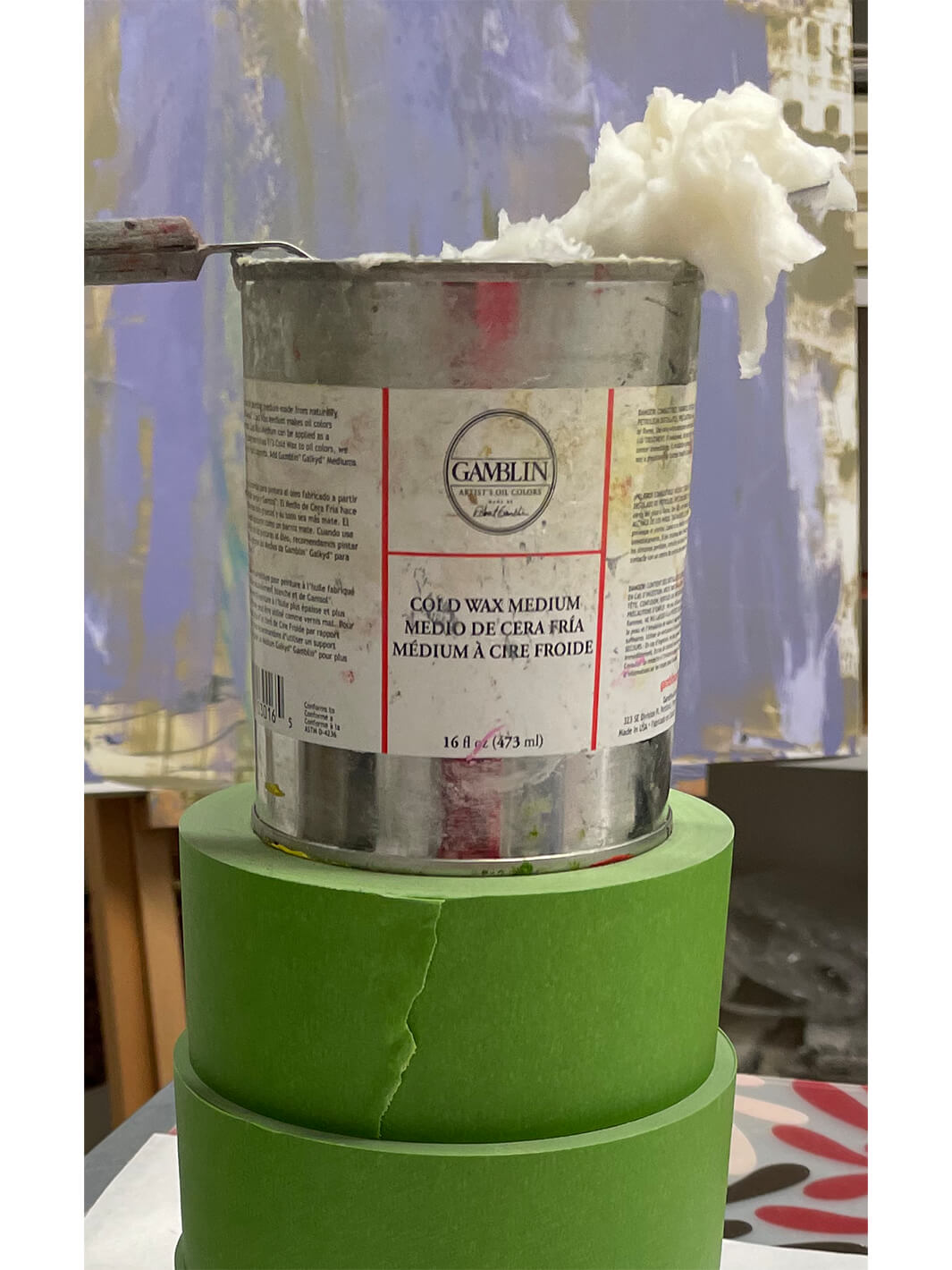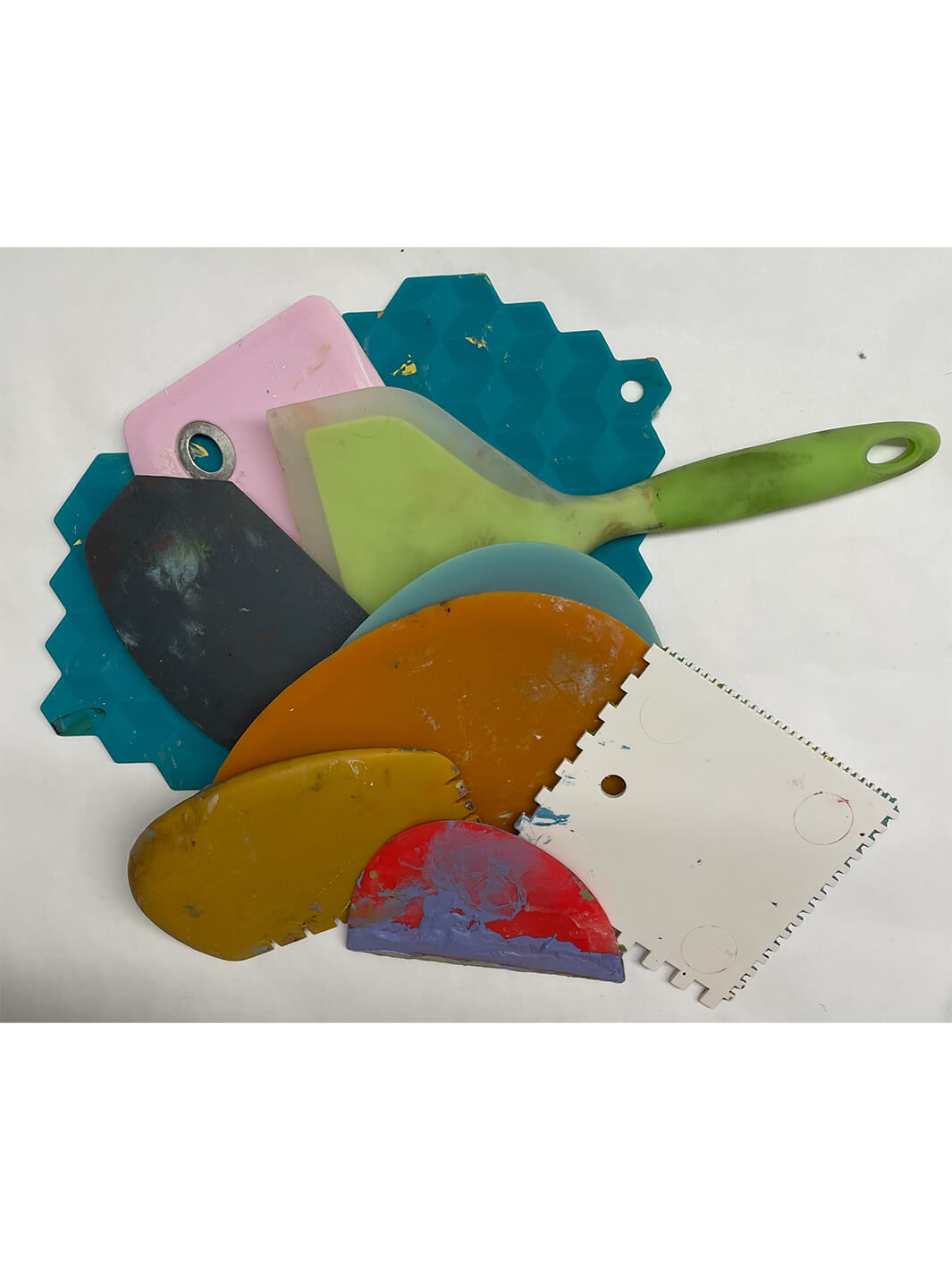The Process

What is Cold Wax Medium?
Cold wax medium, or CWM, is an oil painting medium. It is composed mainly of beeswax, with a small amount of solvent to soften it and other ingredients to aid in drying time.
It has a soft, paste-like consistency at room temperature and dries to a matte surface. Unlike encaustic processes, it requires no heat to use it.
Many luminous and unique effects are possible using CWM.

How is CWM used?
CWM is typically mixed about 50:50 with oil paint, though the ratio can vary according to desired effects.. CWM may be used for traditional brush painting, but due to the thickness it adds to oils, many artists prefer to use palette knives, brayers, and squeegees to push, pull, and roll the paint.
This thickness also means that the paint surface will hold textures applied by pressing, scratching, scraping, etc. with various tools. A semi-dry, tacky surface is receptive to mark-making and transfer techniques. Solvents can be used to selectively remove paint layers or to disperse powdered pigments on the surface.

Is CWM a new product?
Not at all—some form of cold wax medium was probably used in ancient times along with the earliest known use of encaustic or heated wax. Beeswax as an additive to paint was known as early as the 1st century BCE. It is difficult to research the use of CWM in more modern times since many artists have used it for years without making any special note of it in describing their work—it is simply a medium added to their paint. However, ‘modern’ CWM made with solvent was developed alongside the turpentine industry in the late 19th century.The current interest in CWM may be related to the surge of interest in encaustic painting notable in the past decade. Many artists are interested in both processes. Using CWM for abstract painting is the focus for many contemporary, process-oriented painters, but it can be used in any painting approach.
